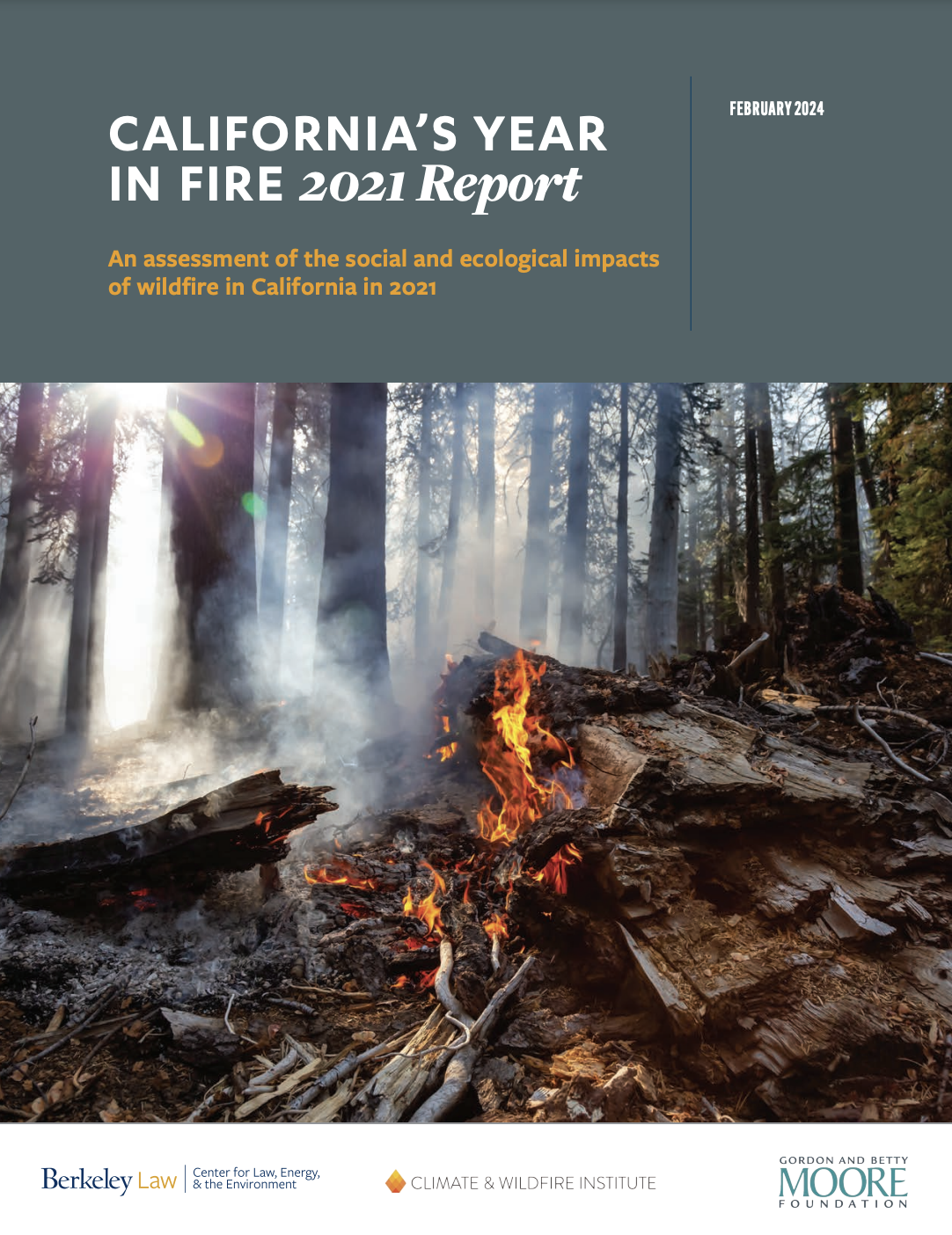 February 2024
February 2024
How are wildfires impacting California, and how are those impacts evolving? This question is central to our social response to wildfire—including how we live with it, restore it to the landscape, and mitigate its worst effects.
A wide variety of wildfire impacts are either not tracked or not reported, thereby limiting our ability to make informed decisions in wildfire mitigation and recovery efforts. And this truncated access to essential information and data has the potential to lead us to unsustainable solutions; for example, if we judge wildfire impacts by the number of acres burned each year and focus primarily on reducing that number, the rational response might be to bolster fire suppression. To do so, however, would ignore a wide range of other social and ecological impacts and the opportunity to improve overall ecological and community health and resilience.
The California’s Year in Fire project, in partnership with the Climate & Wildfire Institute and the Gordon and Betty Moore Foundation, advances a framework for a more complete picture of evolving impacts and consequences, and provides more robust data points to inform meaningful solutions.
The California’s Year in Fire framework focuses on five related questions as a way to better understand annual wildfire impacts.
Question 1: How is wildfire impacting landscapes?
Question 2: How is wildfire impacting ecological resilience?
Question 3: What are the social impacts of wildfire?
Question 4: What is the cost of wildfire response and recovery?
Question 5: How are we addressing wildfire risk?
Access the full report here: California’s Year in Fire 2021 Report
Contact Ken Alex for more information.